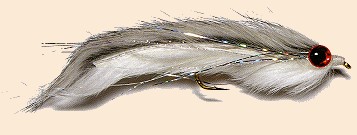1. Chinchilla over white - baby whitefish.
2. Olive over gray - baby rainbow trout and sculpin (One-Fly Winner.)
3. Natural brown over ginger - baby brown trout.
4. Natural brown over yellow - Platte River Special.
5. Black over fluorescent yellow - for dirty water and low light.
6. Black over white - Integration Bunny.
7. Dark gray over shinchilla - small trout and sculpins.
8. Black over ginger - for low water, bright light.
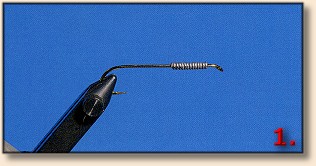
1. Wrap .035 lead on the front half of the hook.
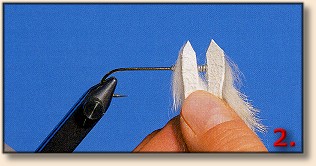
2. Prepare rabbit strips by cutting the tip of each to a point.
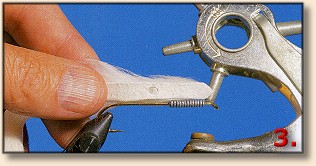
3. With scissor points, a knife, or a leather punch,
pierce a hole in the belly strip one and a half shank
lengths from the tip. This will allow you to pre-weight
hooks. You can also impale the belly strip with the
hook.
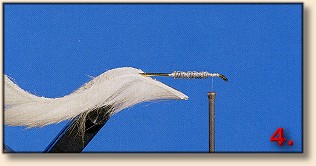
4. Push the rabbit strip over the eye of the hook.
Start your tying thread to secure the lead. Lash some
loose rabbit fur to the lead to help the glue bond and
cover the lead. (You can use Mylar dubbing such as
Lite Brite as well.)

5. Tie the bottom rabbit strip bu the tip just behind the eye.
Hold the fur out of the way with your left hand to prevent
trapping it.
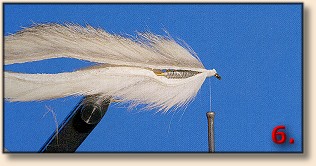
6. Secure the top rabbit strip by the tip. Hold the
fur out of the way with your left hand to prevent trapping
it.
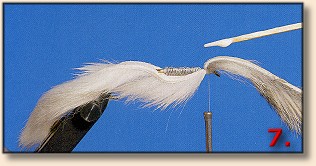
7. Holding the back end of the top rabbit strip away from
you, use a toothpick to apply a light amount of
contact cement on the hide only - if you put too much on the
toothpick, you risk getting it on the hair.
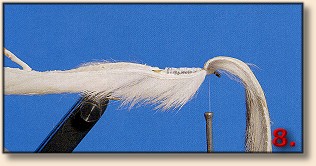
8. Coat the hide side of the belly strip and cover the
lead with contact cement.
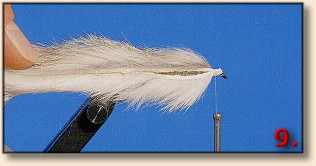
9. Hold the tail ends of the rabit strips in your left hand
and pull them straight back. With your right hand, pinch
the strips together and down into the lead.
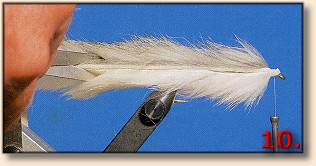
10. Cut the body to length. Push your scissor tips through
the hair to prevent cutting off the fur.
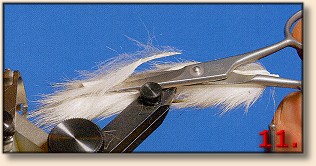
11. Rotate the fly so that the top faces you. Cautiously
taper the tail so that it is lighter and more flexible
when wet. Slide your scissors and cut just a little at
a time.
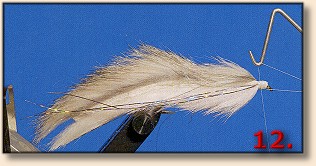
12. Take a few strand of Krystal Flash and Holographic
Flashabou that are double the body length and tie them in
at their midpoint just behind the hook eye. Next, pull
the forward-facing material to the far side of hook and
tie it in place. Cover the ends with thread, whip-finish,
and cement.
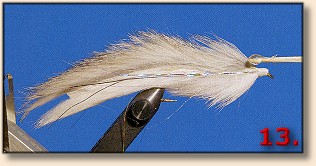
13. Attach the eyes. Stroke the rabbit hair back. With a
toothpick, coat the area just behind the thread head with
Goop.
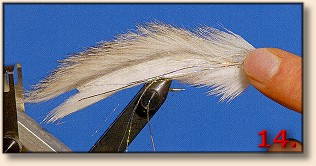
14. Place an eye on the glue. Repeat this on the other
side. Make sure you use enough glue to hold the eyes.
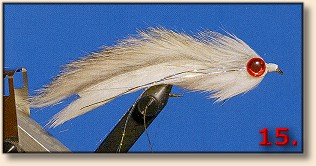
15. The finished Double Bunny.

